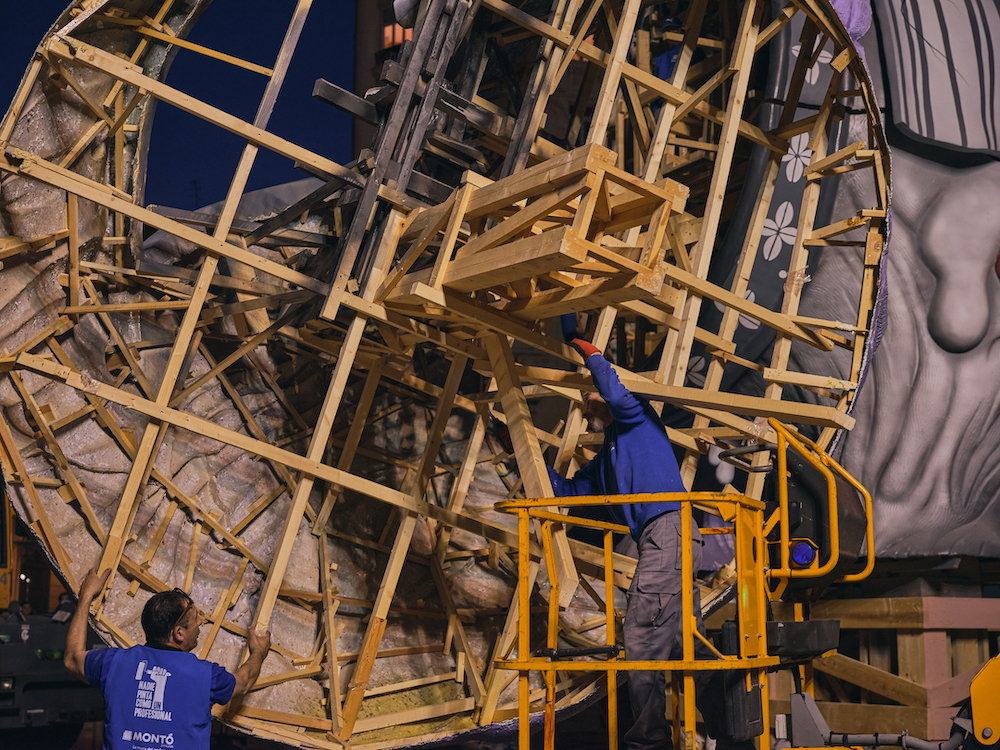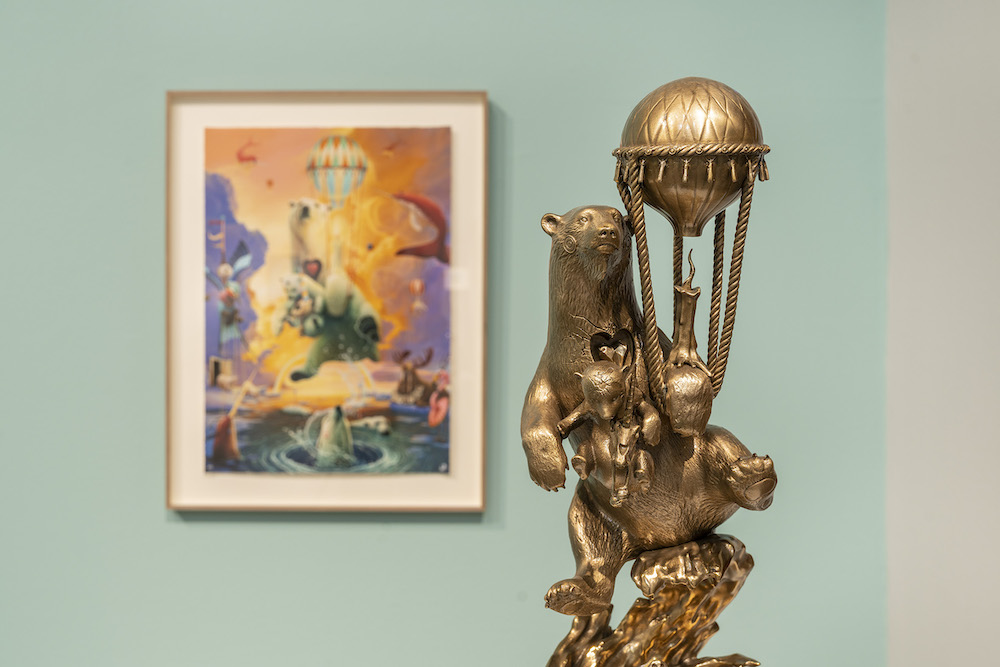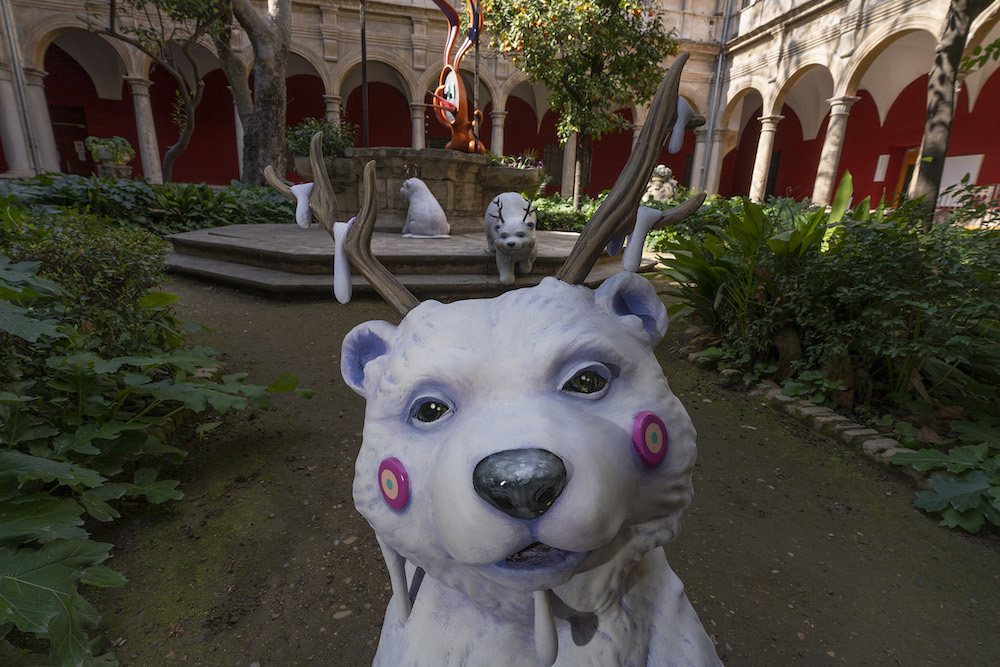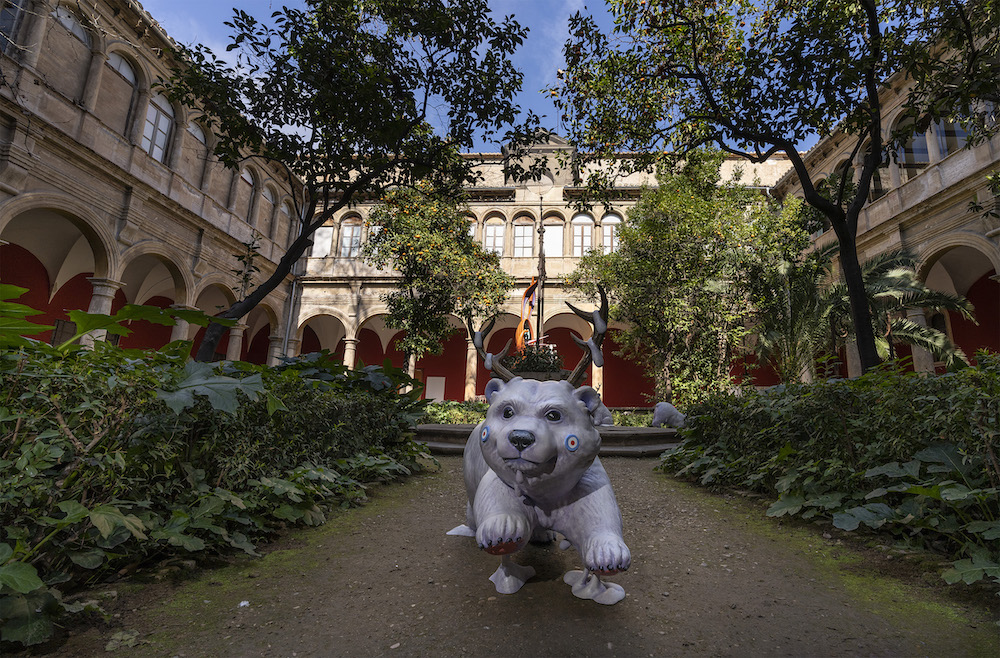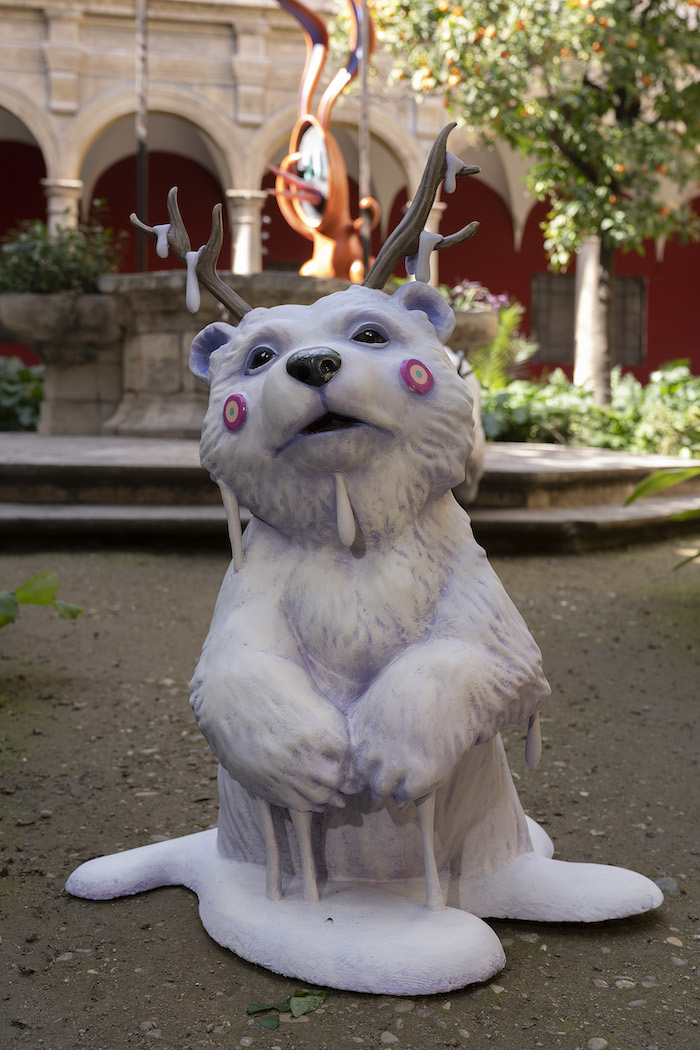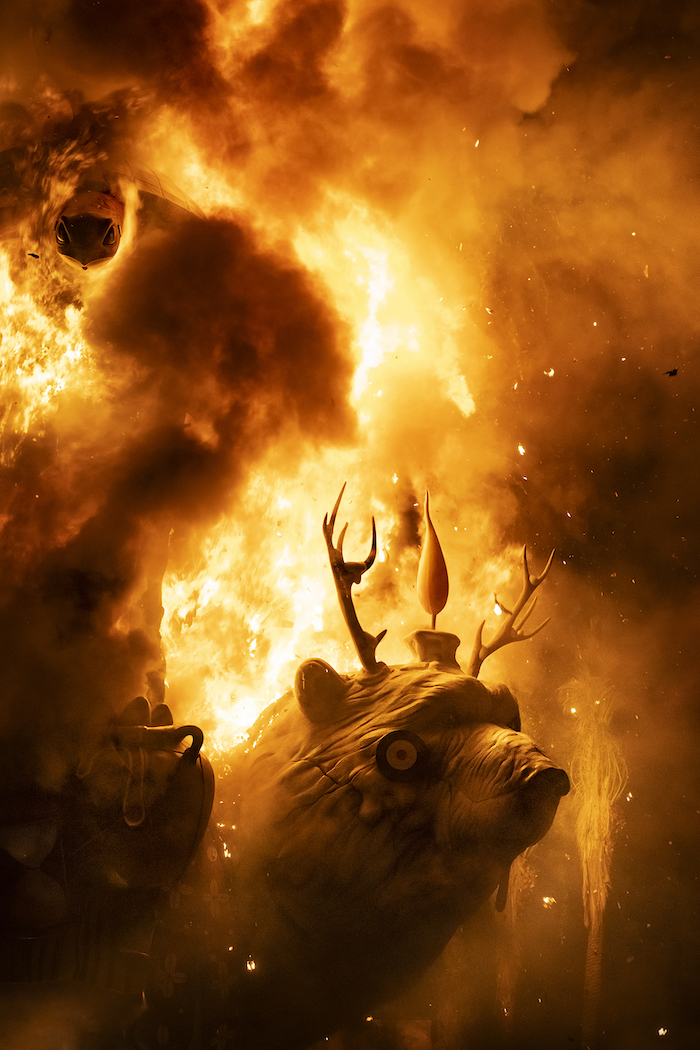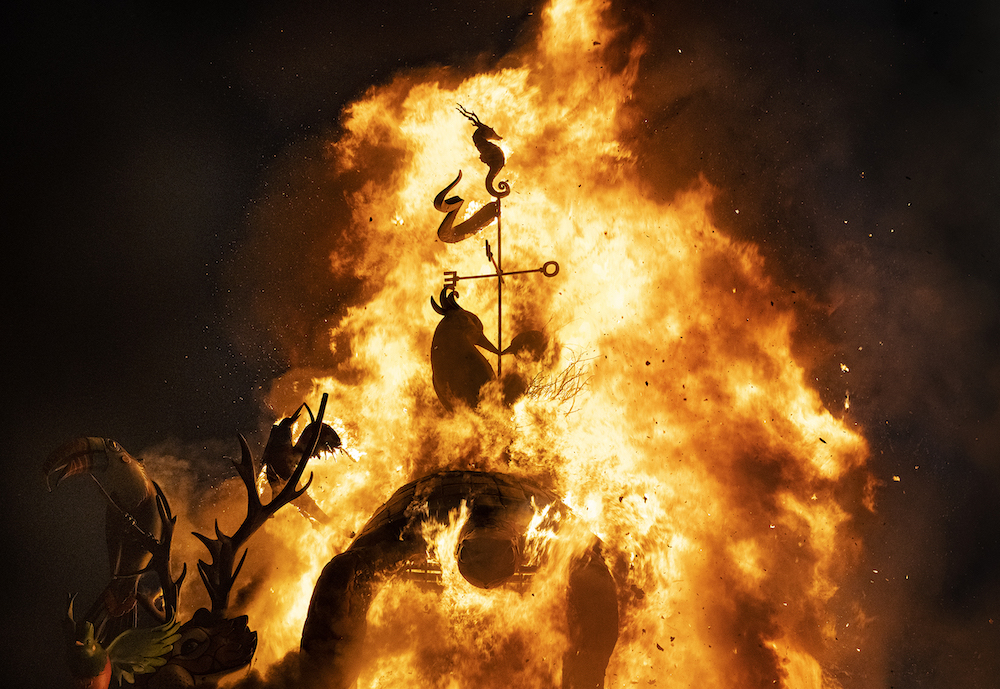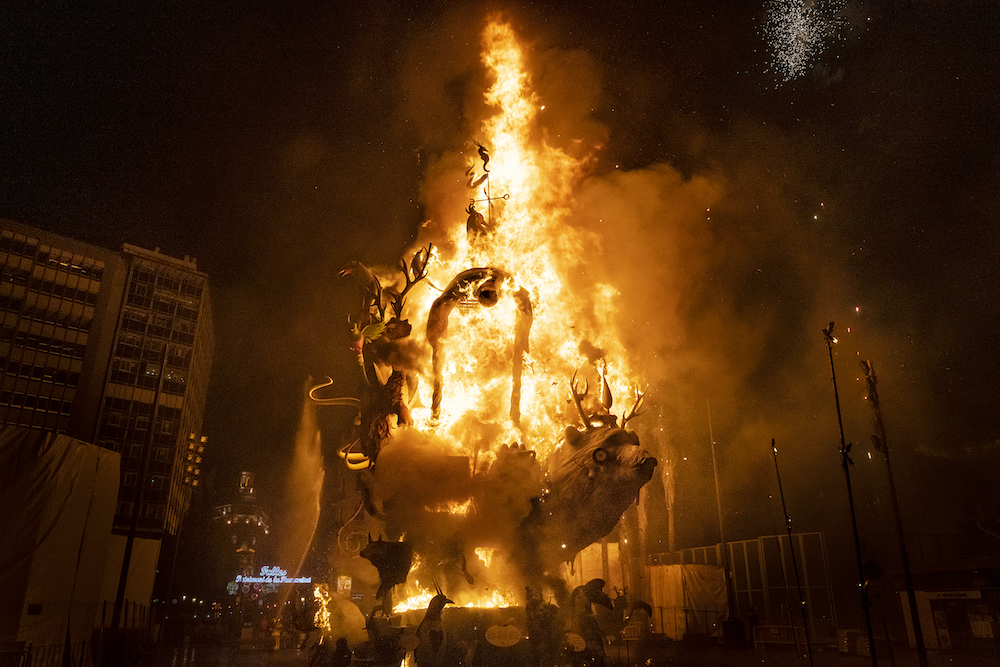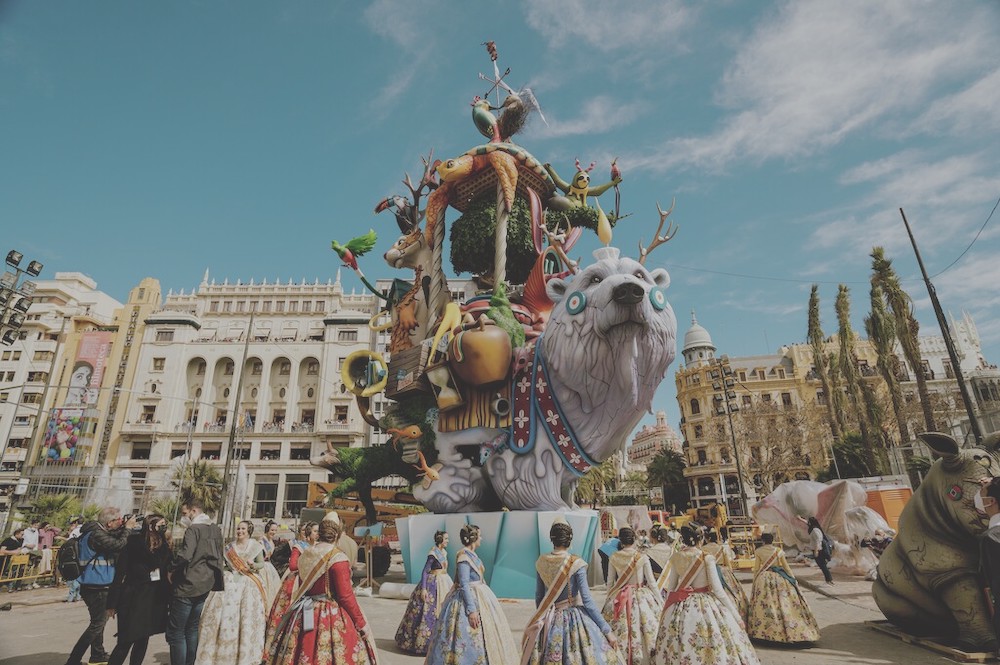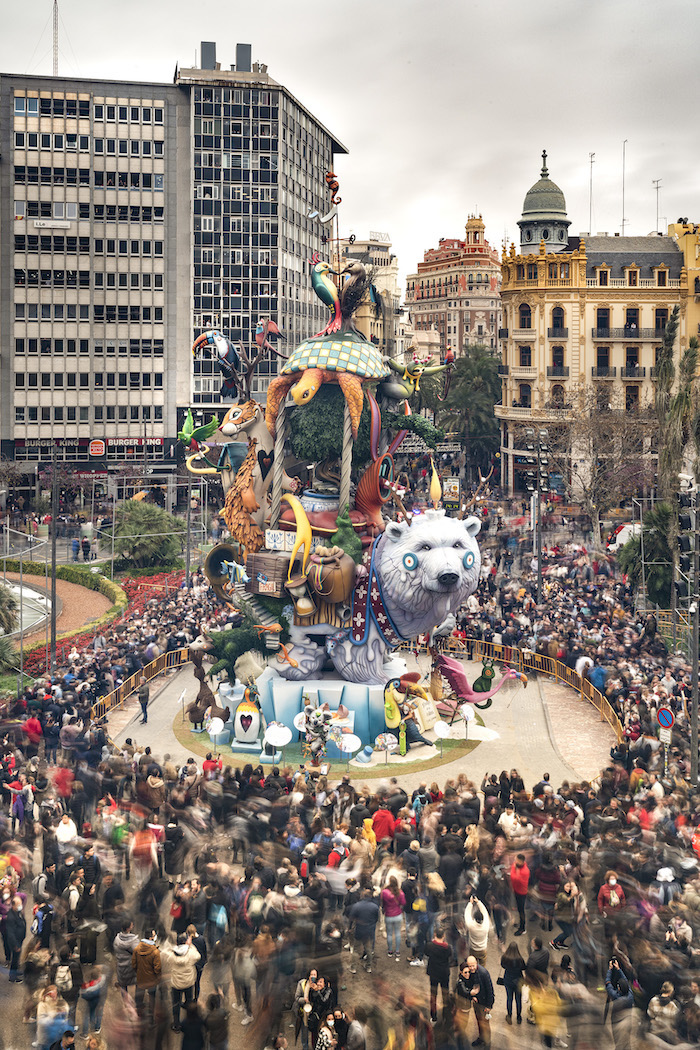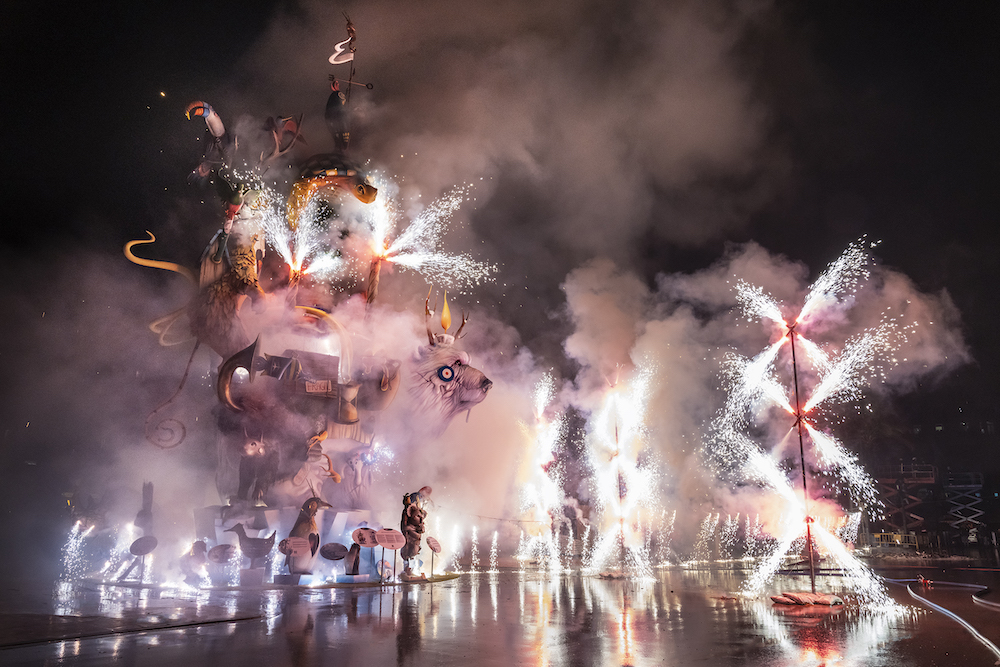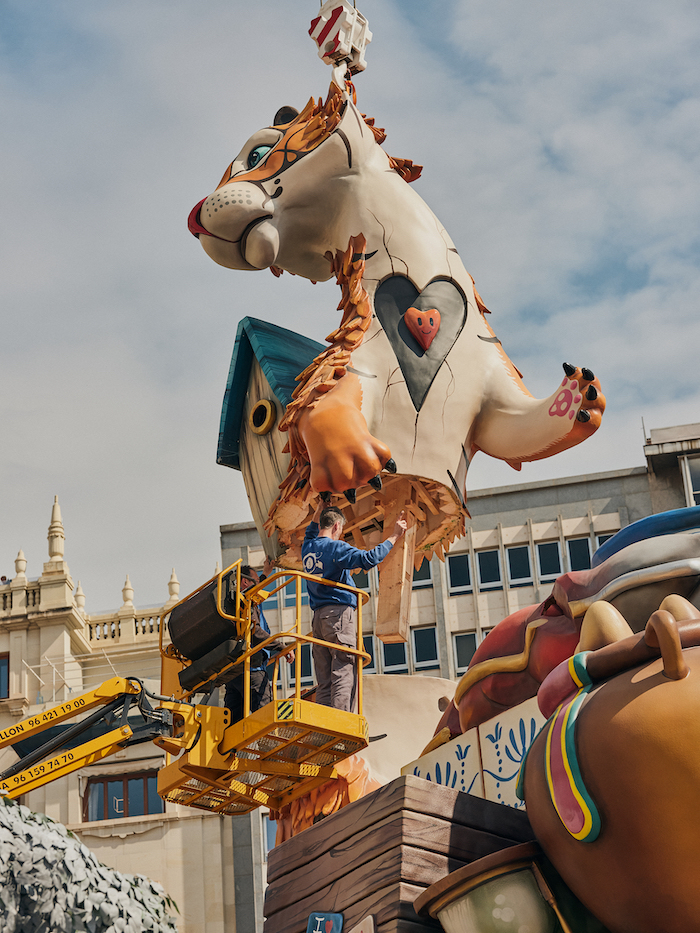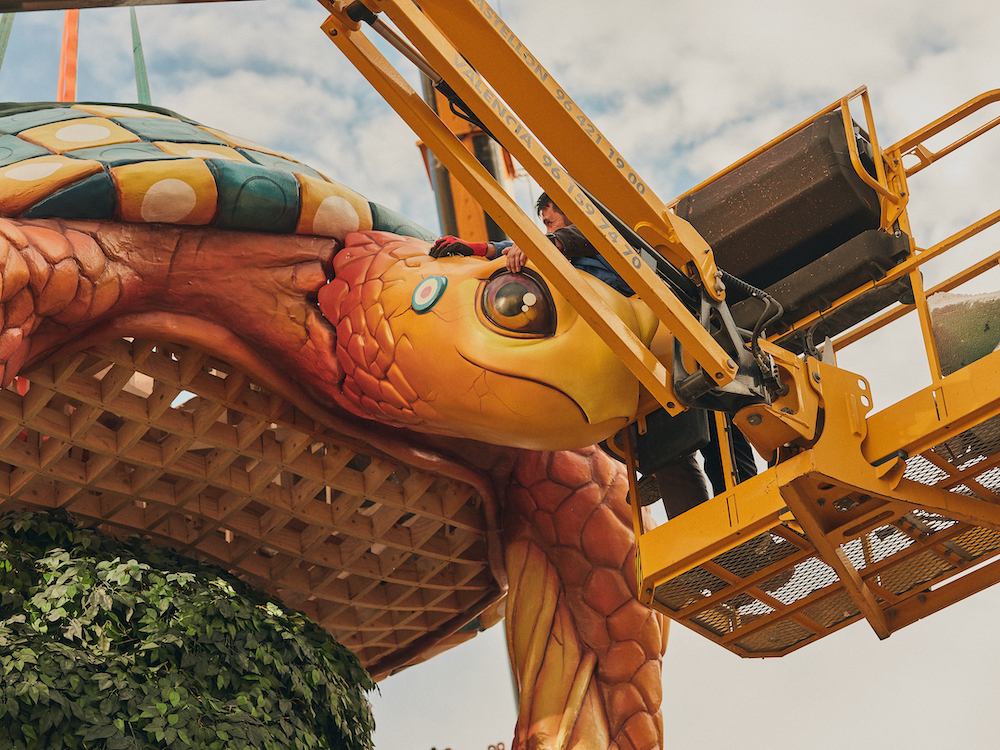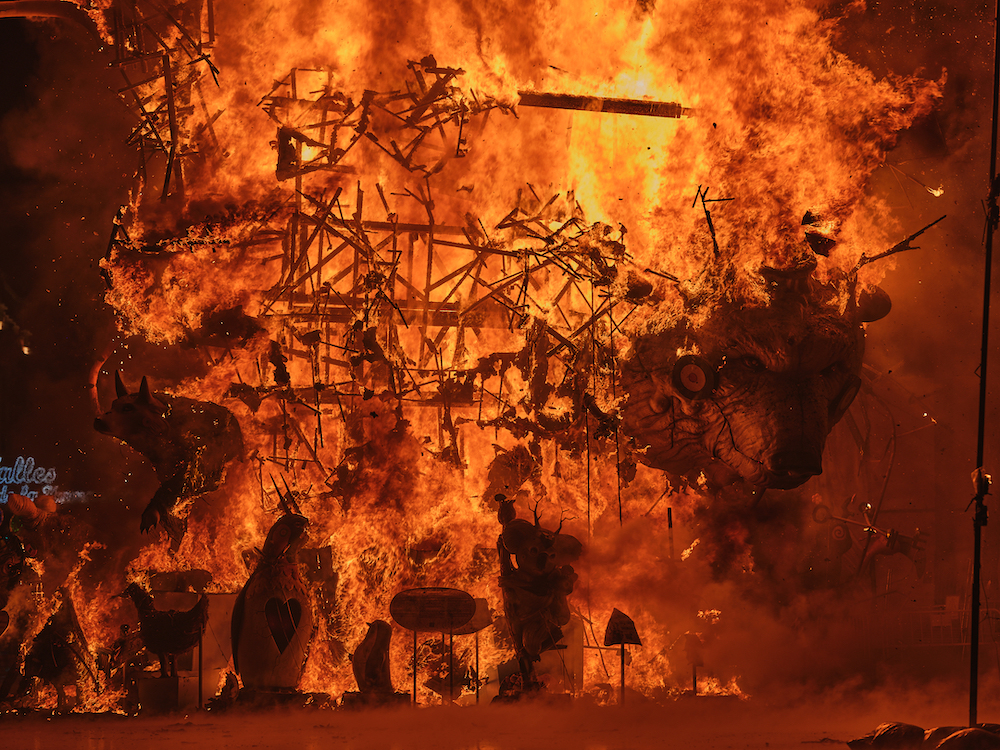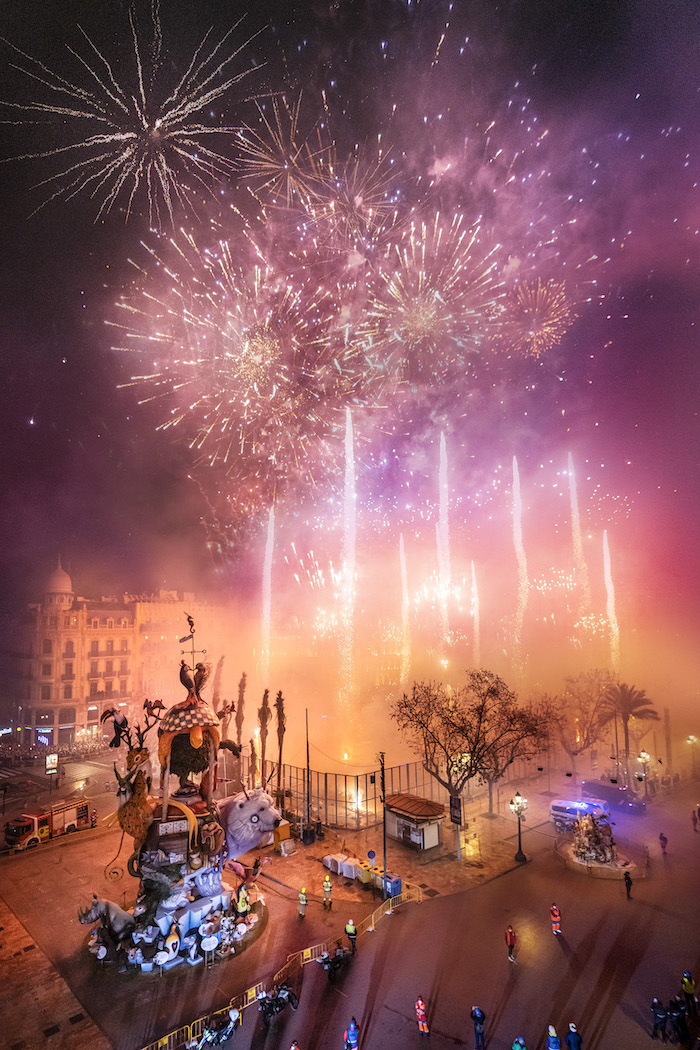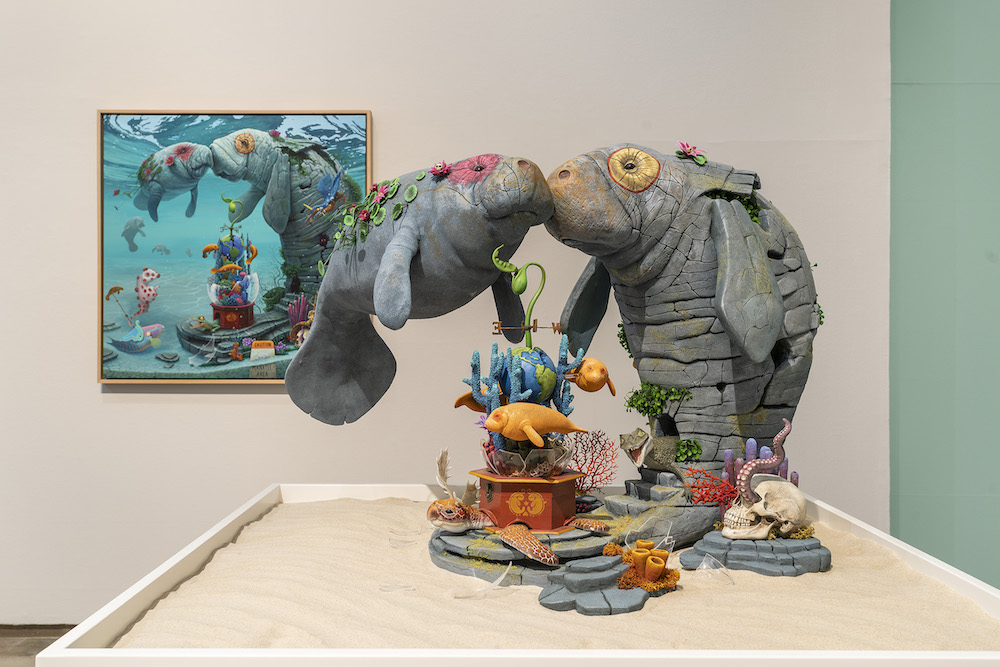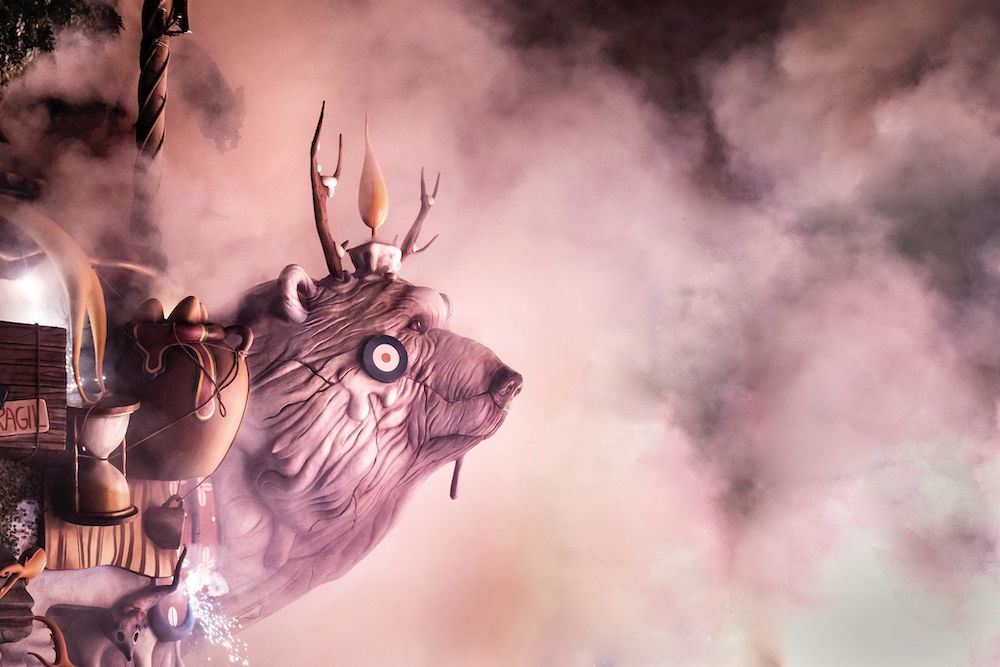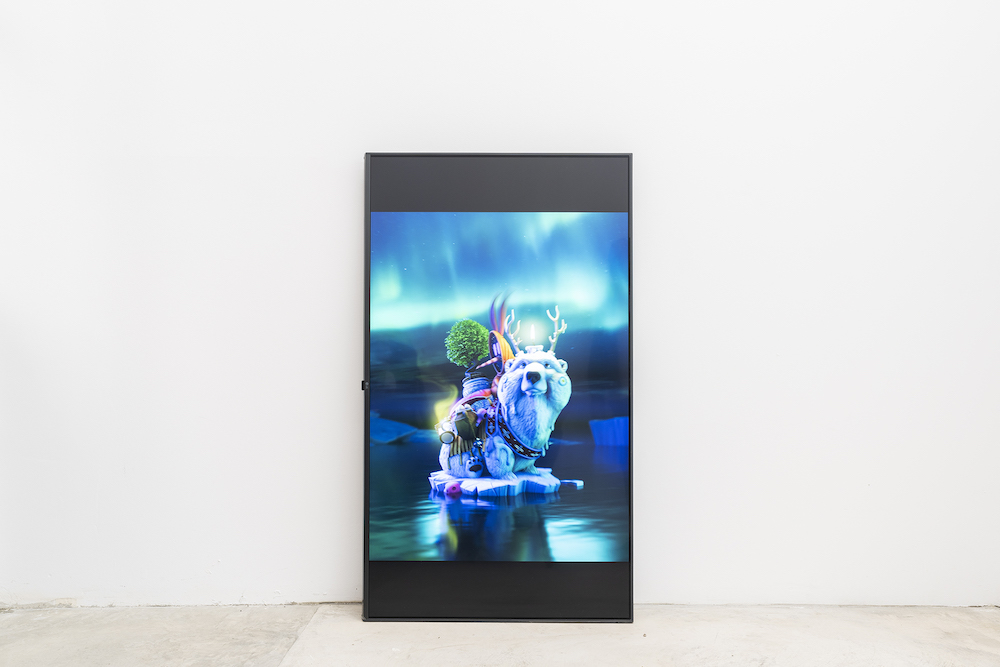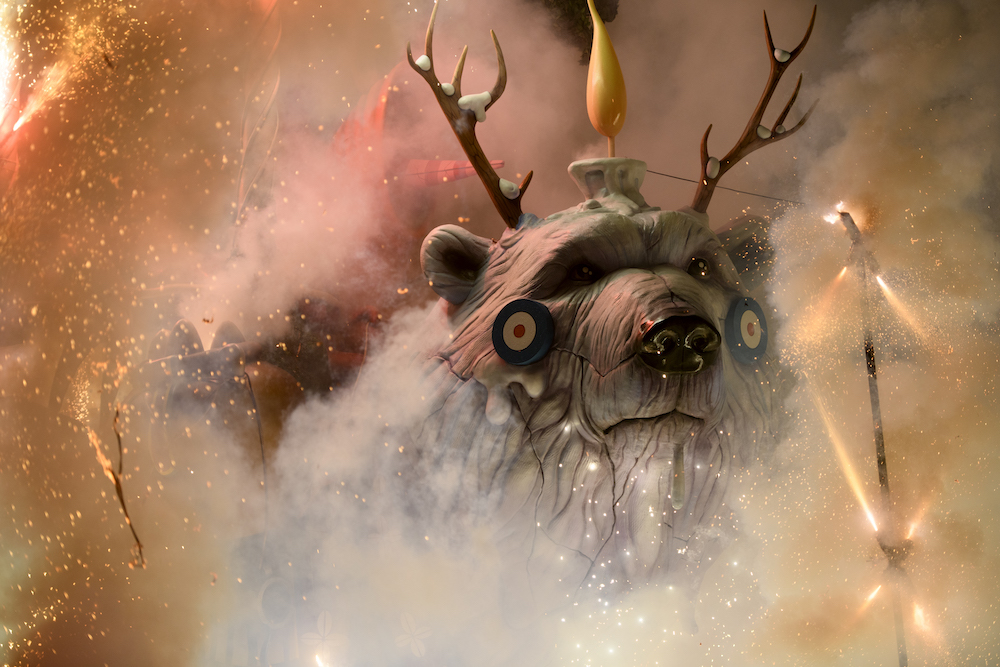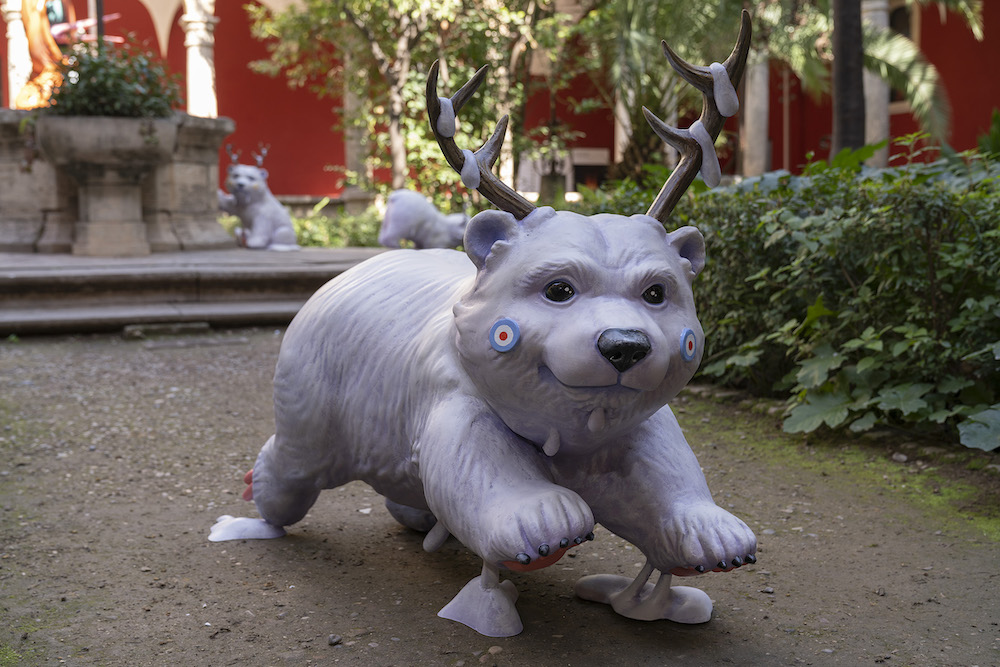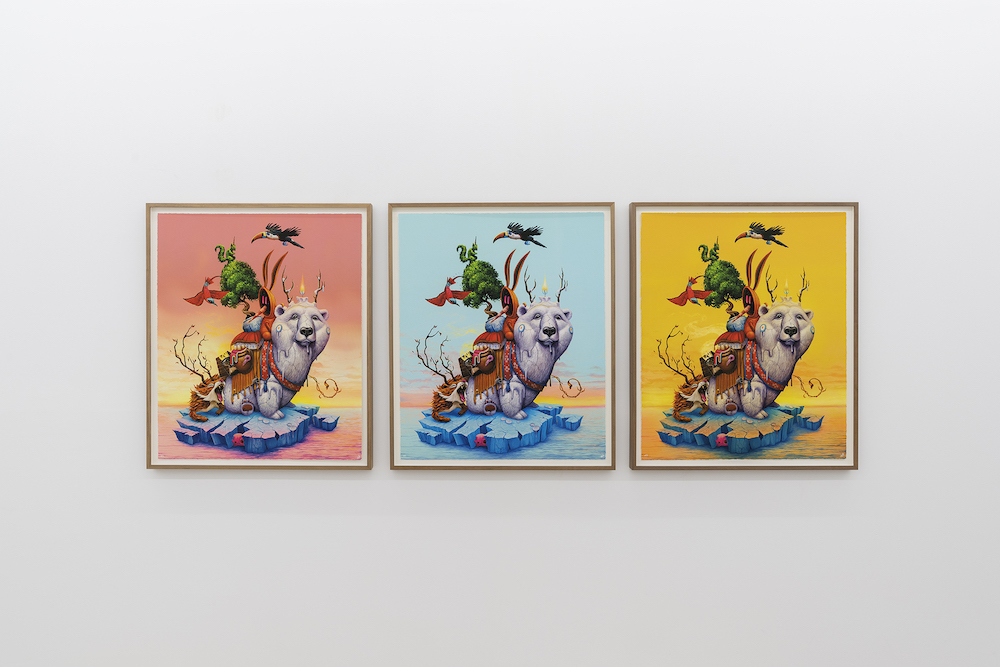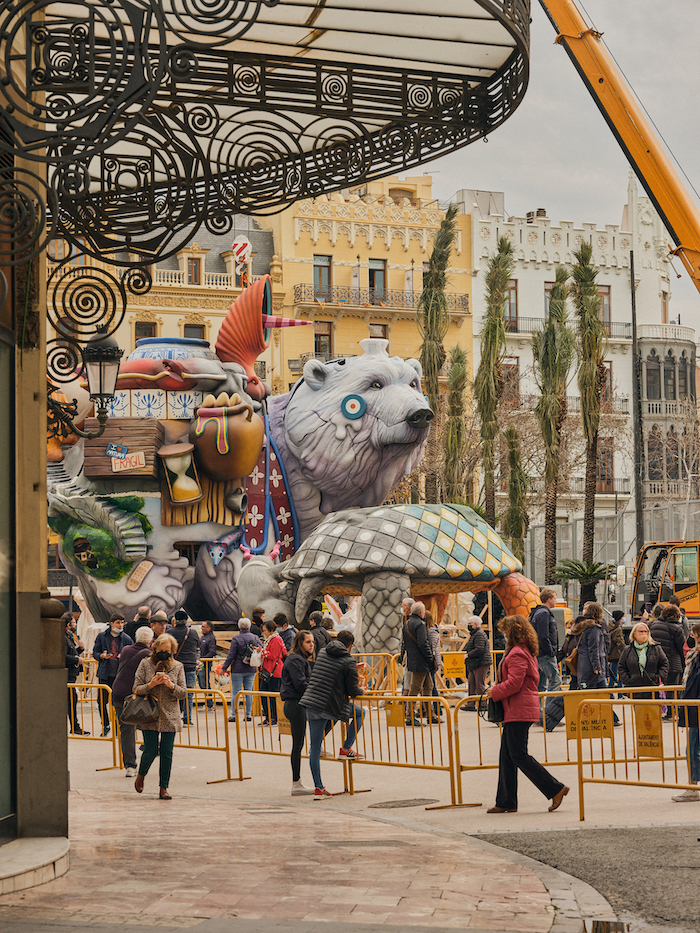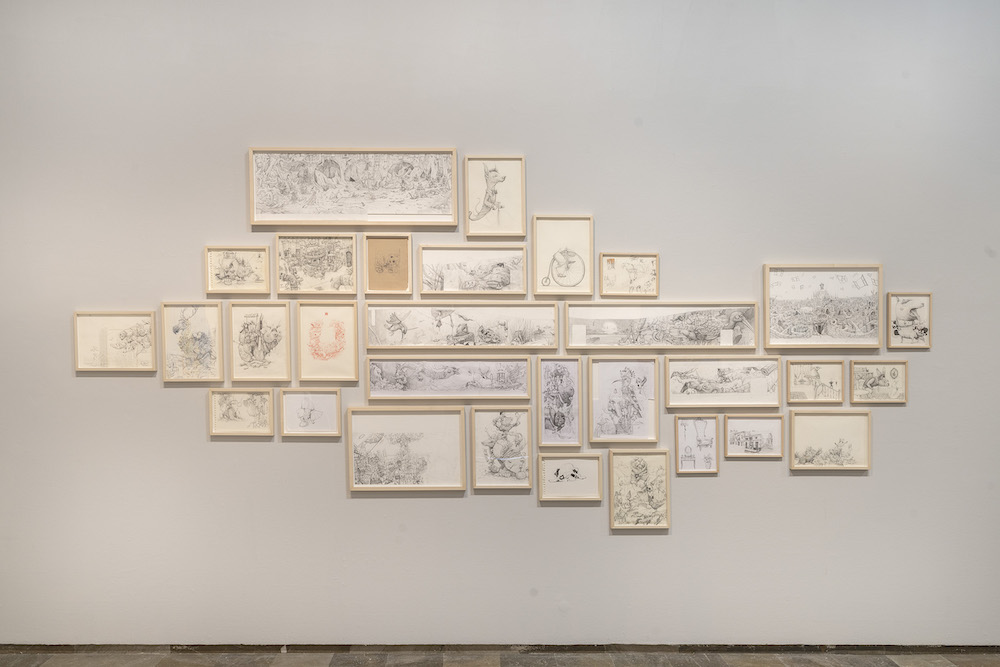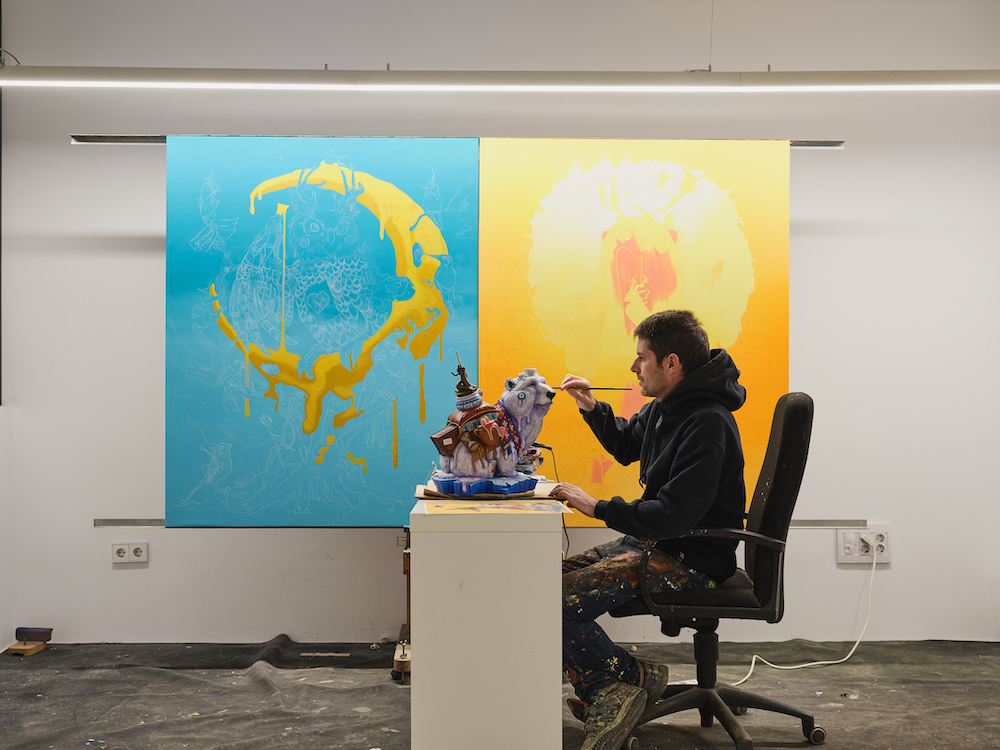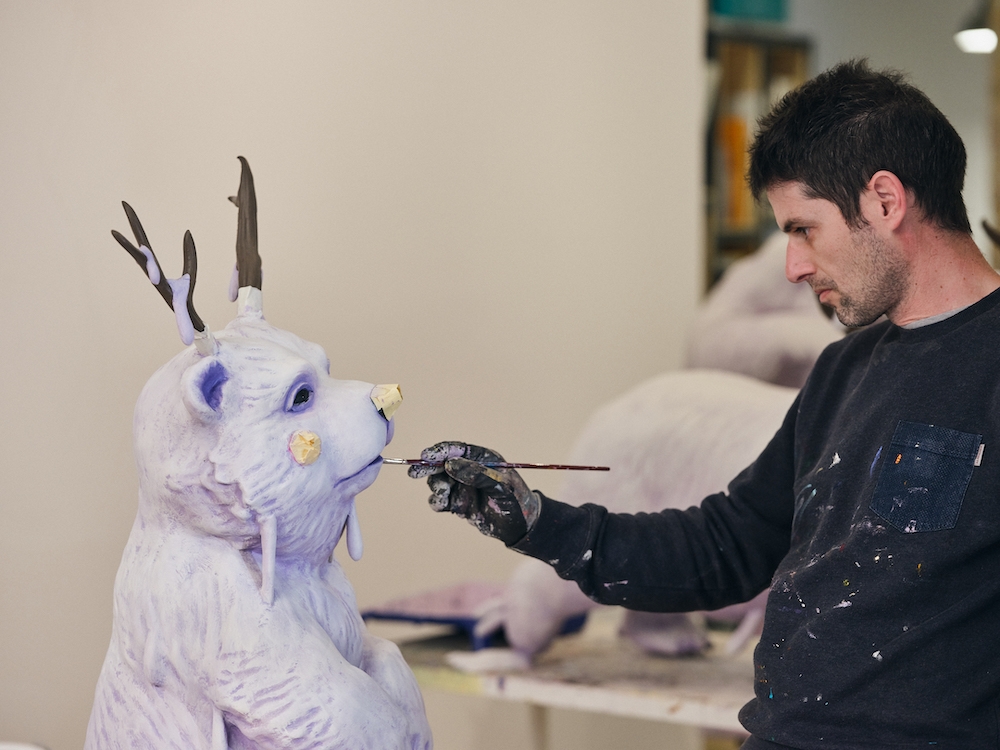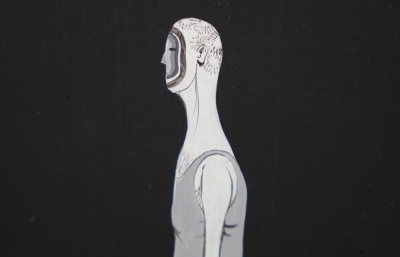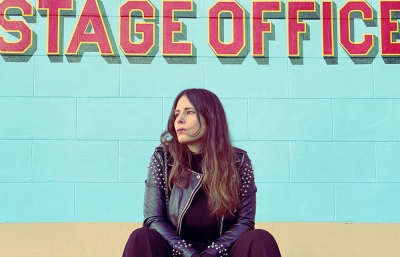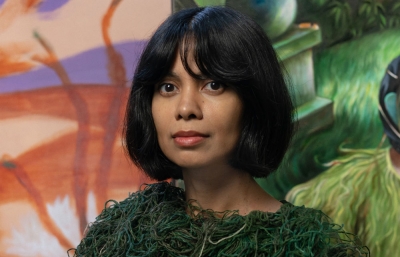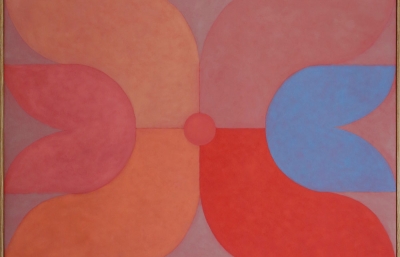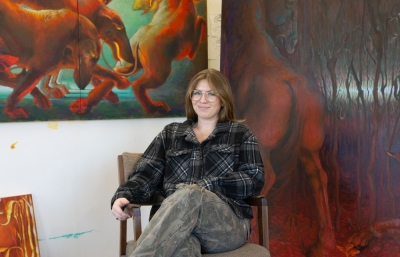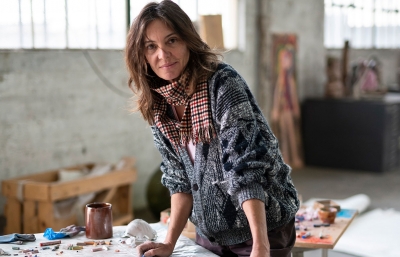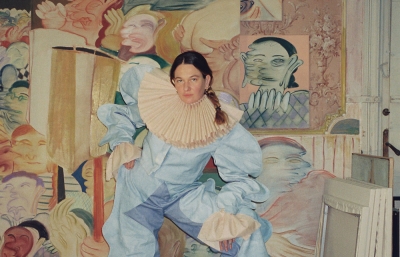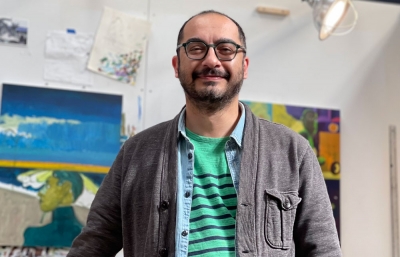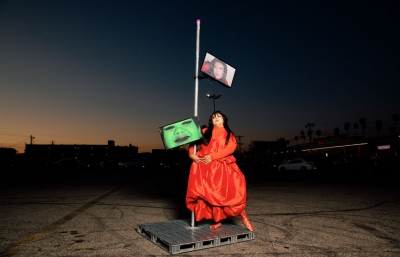The movement of Surrealism aimed to revolutionize the human experience by balancing the rational vision of life, with the irrational world of dreams and the unconscious. The resulting works would change the course of history, as unexpected compositions of beauty and absurdity would both inspire and provoke a generation. In the spirit of our 20th century contemporaries, it feels appropriate that we begin a conversation on climate change through a colossal, burning effigy in public space…

Artist Antonio Segura aka DULK, is well known for his elaborate portraits of threatened species. Through sculpture, installation and painting, we see his menagerie of creatures evolve in remarkable ways to avoid capture, or loss of habitat. Though this appears fantastical, climate change is actually accelerating the evolution of many species through environmental stressors. Through the surreal universe of DULK, transformation moves faster still, as the vulnerable become impenetrable and commodities like tusks and teeth become defensively prickly to stave off human hands. His portraits symbolically illustrate a history of conflict and greed, encouraging audiences to look consciously toward the future.
For his latest project ‘Protect What you Love’ in Valencia Spain, DULK launches an impressive series of city wide activations, exhibitions, apps and prints. Most significantly, the activity coincides with the prestigious annual tradition of Las Falles, which after 2 painstaking years, will see a 23 meter high polar bear dramatically burnt to the ground.
A poetic and devastating call to action encouraging support and awareness for conservation efforts globally. 
Charlotte Pyatt: Tell us about Falles!
DULK: From the 1st to 19th March, València hosts las Falles. Over 300 temporary art installations go up in the city and on 19th March, they are all burned. It is an annual Valèncian tradition to welcome the beginning of spring. The Falles artists all have a similar aesthetic, except for the main commission, which in recent years has invited artists from street and contemporary art. Okuda was the first, followed by Pichiavo and Escif and now myself. Its cool for the city, because it opens the festival to new generations of people, as well as new global audiences who can connect with the tradition of València through our work.
What do you have planned for the festival and how long has this been in development?
For my personal contribution, we have the the main event which is called La Cremá - the burning of the installation in the main plaza. We also have 3 exhibitions in the city, one with CCCC (al Centre del Carme Cultura Contemporània) called “Procés Natural” which is a collection of original works, sketches and sculptures and the other with Tuesday to Friday Gallery which hosts the prints and small originals and the last showing the process of the falla at Las Naves.
We started the installation of the sculpture on 1st March 2022, but the piece itself had been built for the past 2 years having been delayed due to covid. Here in Valencia, there are many ateliers who build the Falles, my team came to join with them and together we assembled, painted and built the structure. The local people all have expert knowledge and technical abilities since the event provides a lot of working opportunities every year, the principle builder himself is an architect. 
The final piece is over 23 meters high, we had constructed each piece individually In the studio and so to see them all assembled together in public space has been amazing. The inside is all constructed from cardboard and wood. The production all in all took about a year to complete.
How do you feel about 2 years going up in smoke?
For me, I don’t know how I will feel… but I like the idea of greeting the spring in celebration. I have grown up with Falles, the destruction of the work in the flames feels similar to the decay we welcome when we create works on the street, slowly fading or peeling away as time and nature take it back. 
Animals have always featured heavily in your work, why Polar bears for Fallas?
The polar bear is one of the most immediate symbols in wildlife for climate change and they feature heavily throughout this project. 5 years ago, I was able to visit Churchill in Manitoba Canada, where I had the opportunity to learn about the polar bears that live there in the north, their migratory patterns and how they end up in the town each summer. Each year they find the bears are changing their habits to stay south longer. With the ice caps continuing to recede at an alarming rate, the bears find it easier to scavenge for rubbish than return to the ice where food is ever more scarce.
Conceptually, we wanted to represent these growing changes in natural behaviour throughout the project. We have the mother polar bear in the main square for falles, her fur melting like a candle as other animals take refuge on and around her, they are lost and they are all in search of a new habitat. They will be lost in the fire, it is inevitable… but we offer hope in other areas of the city connected to the event.

At CCCC, we host the exhibition “Procés Natural”, in the historic courtyard here, we find her cubs have migrated and have found a new way of life in a green oasis. The public can visit several of the creatures all hidden throughout the foliage and around the trees while visiting the exhibition. We also prepared a story for children and adults about climate change, how animals are changing their habits and the role of human’s in this issue.
Narrative has always played an important part of your work tell us some more about the other animals which feature and their relationship to the theme.
While the Polar Bear is the largest of the animals, there are around 30 others which feature. Normally when I do a painting, there is a one main character and then a number of little stories all connected around it, everything means something and for the past few years this includes my own experiences and histories.
Around the main installation we can see symbolic representations of animals that are in the midst of crisis throughout the world. The koala represents the wildfires of Australia in 2019/2020 where over 60,000 of the creatures lost their lives. The Orantutan represents Borneo where their rapid decline as a species is as a direct result from hunting, logging Palm oil and developments in agroforestry. The Fish turns to a can, to reflect the loss of marine life from overfishing.
There are surreal elements that feature in each work to elaborate the story of the animal. Some are seen in full colour, others turn to grey and then only organic silhouettes remain. Others adapt, fur floats away like leaves, scales become metallic and impenetrable or horns transform to cacti.
There is something almost Darwinian about your approach to documentation, travelling to find these endangered species throughout the world and then transforming them through your vision
I love this idea of an encyclopaedic approach to my painting. I see my paintings and sculptures as windows to different ecosystems. Each character and context is very specific and is often the result of a trip or experience that I have lived myself. I go and I learn about the geography and the conflicts these creatures experience locally to create surreal portraits of the moment and the realities in which they exist.
There are symbols that recur, like the little hooded character watching over the animals, the target seen on the cheeks of the animals and hidden throughout. These are the constants regardless of where the animals are from, they continue to be under threat and need our protection.![]()
Where did your passion for wildlife come from?
Animals have always been my passion, I love drawing and travelling to document wildlife in nature. This has been the same since I was a child, one of my drawings from childhood even features in the exhibition. Growing up my father kept 400 canaries, these memories inspired me then, and they continue to inspire me now as I work to offer moments for people to reconnect with nature.
I will also show for the first time this year a collection of my wildlife photography for my next exhibition with Thinkspace Gallery in Los Angeles. Prior to the show, i’ll be spending 20 days in Alaska for inspiration and research, I cant wait. 
And the burning question.. (pun intended) lets discuss the irony of burning a giant installation to incite a conversation on climate change. What do you say to the sceptics?
With this falla burning, I wanted to send a powerful message to the world - if you don’t protect nature and the things that you love, it will disappear. Some of the worlds most endangered animals feature in this installation and after the fire, they will be gone forever.
We all pollute everyday, taking planes, eating fruits from the other parts of the world among so many other things that are worse, and no-one talks about it. Of course I know that burning is not good for the planet, but we worked to be as conscious as possible with sustainable materials and water-based paints. Fallas is a very ancient festival. I grew up with it and the opportunity to communicate this message on such a significant platform is perfect. It could give great visibility to this urgent message, illustrating what is happening metaphorically in nature with these impactful images to inspire audiences to help spread the message further.
Ultimately, while this is just a metaphor it could become our reality unless we begin to change our behaviour. I hope the event more than anything else, encourages awareness and action for these urgent concerns.
https://dulk.es/

